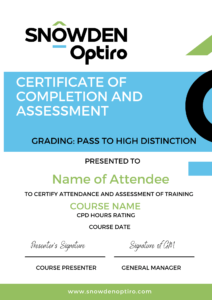
Advanced Resource Estimation and Simulation – Perth & Online
Taking your resource estimation knowledge to the next level
Course presenter: Ian Glacken – Executive Consultant; Dr Gregory Zhang – Senior Consultant; Kahan Cervoj – Executive Consultant
Advanced Resource Estimation and Simulation
Taking your resource estimation knowledge to the next level
This 5-day, hands-on course is designed for geologists and resource professionals looking to deepen their understanding of advanced resource estimation techniques and simulation.
Building on the foundational knowledge from our Resource Estimation – Fundamentals course, this program focuses on practical applications and uses real-world dataset.
You’ll explore how and when to apply key change of support techniques such as uniform conditioning, multiple indicator kriging, and conditional simulation. The course combines theory with guided exercises using GSLIB-style tools and Supervisor software (a free temporary licence is provided to all attendees for the training).
Key topics include:
- A refresher on kriging fundamentals
- Overview of kriging methods: Ordinary, Simple, Indicator – where and why each method is useful
- Non-linear estimation: when it matters and how to apply it
- The concept of dispersion variance and change of support
- Predicting the mining tonnage-grade curve from sample data (global change of support)
- Predicting block tonnage-grade curves from large block estimates (local change of support)
- Understanding recoverable resources and the main techniques:
- Uniform conditioning (including local uniform conditioning)
- Multiple indicator kriging
- Conditional simulation
- Assessing grade and geological risk through simulation
- Overview of popular simulation techniques:
- Sequential Gaussian Simulation
- Sequential Indicator Simulation
- Turning Bands
- Categorical simulation for geological features (e.g. rock types)
- Multivariate simulation – how and why it’s used
- Drillhole spacing analysis with linear and non-linear methods
- Practical insights into applying machine learning to resource modelling
- Case studies demonstrating real-world application of estimation and simulation methods
Throughout the course, you’ll work with both provided datasets and (optionally) your own, allowing for tailored insights and practical demonstrations. If you’d like to use your dataset, we recommend submitting it in advance so the course presenter can review it beforehand.
This course is ideal for professionals seeking to strengthen their geostatistical toolkit, better understand uncertainty, and gain more from their data—whether you’re tackling complex deposits or looking to refine your current resource models.
Duration (in days)
5
Price in AU Dollars
In-house /Online or Onsite training is a cost-effective way of getting your whole team trained. Please contact us for a quote or further information: training@snowdenoptiro.com
Open-Book Post-Course Assessment Exam
 As part of your course package, you have the option to take an open-book post-training course assessment exam at no additional cost. This is a valuable opportunity for you to reinforce your learning and demonstrate your understanding of the course material, and for you to add to your professional portfolio.
As part of your course package, you have the option to take an open-book post-training course assessment exam at no additional cost. This is a valuable opportunity for you to reinforce your learning and demonstrate your understanding of the course material, and for you to add to your professional portfolio.
Key Points:
Open-Book Exam: You can use your course materials during the exam to assist you.
No Extra Cost: The exam is included in the price you have already paid for the course.
Graded Certificate: Upon successful completion, you will receive a graded Certificate of Assessment, showcasing your achievement.
We encourage you to take advantage of this opportunity to earn your Certificate of Assessment, which can be a great addition to your professional portfolio.
Benefits for Attendees:
- Reinforced Learning: The assessment provides a structured opportunity to review and reinforce the knowledge gained during the course, solidifying key concepts and techniques.
- Practical Application: As an open-book exam, it encourages the practical application of course materials, allowing participants to demonstrate their ability to reference and utilise resources effectively in real-world scenarios.
- Professional Recognition: Earning a graded Certificate of Assessment enhances the attendee’s professional portfolio, providing a tangible credential that reflects commitment to continuous learning and expertise in the subject matter.
- Confidence Building: Successfully completing the assessment can boost confidence in the subject area.
Benefits for Managers:
- Verification of Competency: The assessment allows managers to confirm that their team members have not only attended the course but also comprehended and can apply the knowledge gained.
- Informed Decision-Making: The results of the assessment can help managers identify areas where further training might be needed, enabling more targeted professional development strategies.
- Increased ROI: By encouraging participation in the assessment, managers ensure a higher return on investment for the training, as employees are more likely to retain and apply the knowledge effectively.
- Team Performance Enhancement: A team that has successfully completed the assessment is better equipped to contribute to projects and initiatives, improving overall team performance and productivity.
- Recognition and Motivation: Managers can use the graded certificates as a basis for recognising and rewarding employee achievements, which can boost morale and motivation within the team.
Contact us for further details
Get a quote
-
00
days
-
00
hours
-
00
minutes
-
00
seconds
Date
- Aug 25 - 29 2025
Time
AWST- 9:00 am - 4:30 pm
Cost
- AUD7,950.00
Location
Perth classroom and Online
Organizer
-
Snowden Optiro

